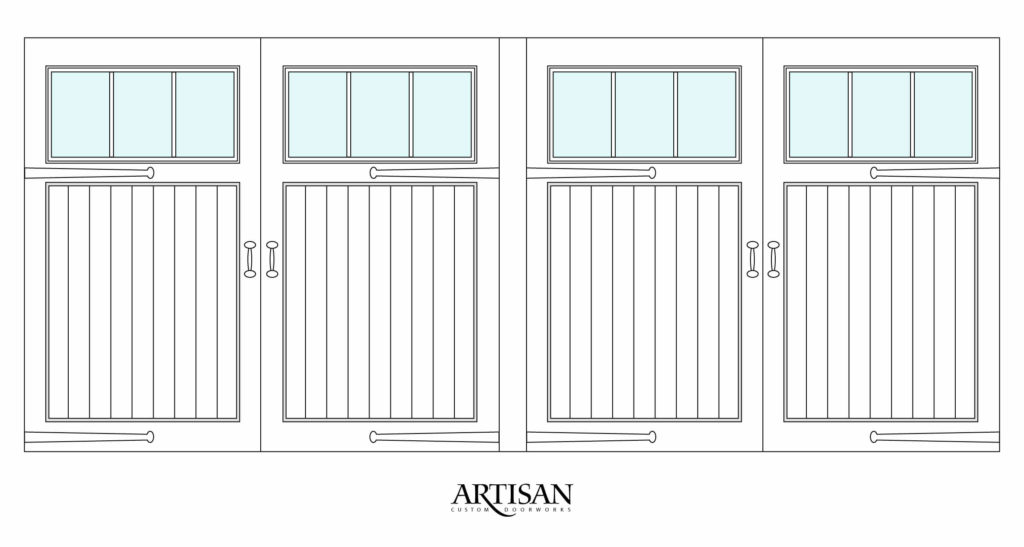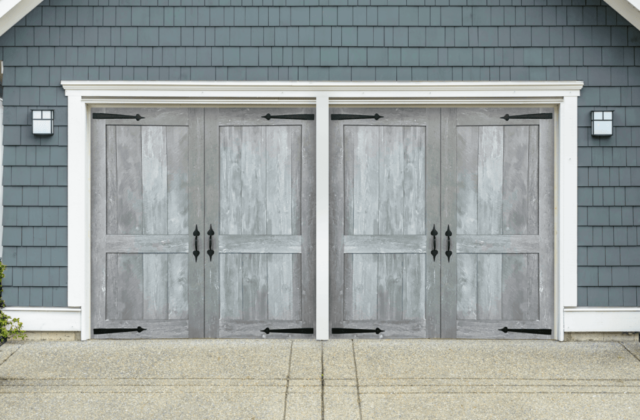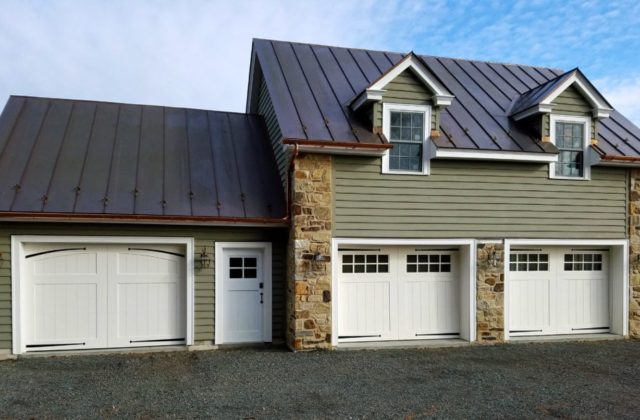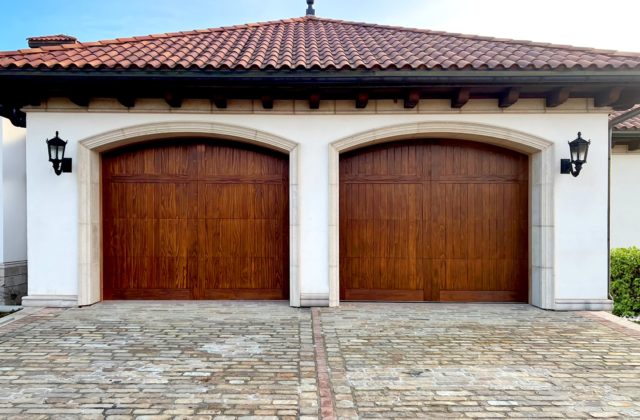You’ve designed the perfect carriage style garage door. You picked a top quality material, added an arch top with custom glass, and included cross buck trim boards and decorative hardware for additional visual appeal. Now for your final decision, which garage door coating will you use to finish it all off – stain, paint, or faux stain? While they all result in a beautiful finish, they each have their own benefits and maintenance needs.
Stain-grade and Paint-grade Garage Doors
The ultimate choice you make when deciding on a garage door coating may be dependent on whether you’ve chosen to build your new garage door with stain-grade or paint-grade materials. A stain-grade door uses woods that will look beautiful when stained, but stain-grade doors can also be painted. A paint-grade door uses materials suitable only for paint finishes – not for stains.
If you are undecided on how you will ultimately finish your garage doors, opt for a stain-grade door because it will leave you open to the most finishing options
Choosing Your Garage Door Coating
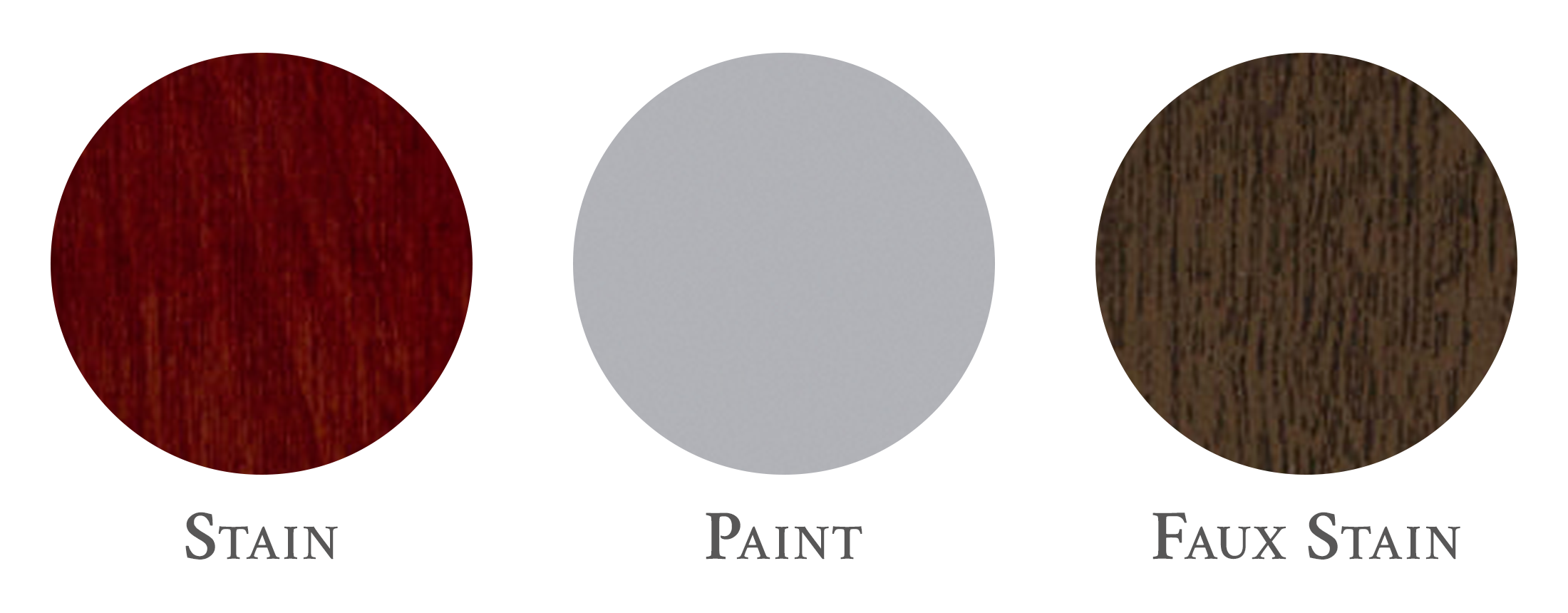
Choosing Garage Door Stain
Artisan uses Sansin stains for superior finish that employs nanotechnology to penetrate the wood more intensively than other stain systems. Stain colors are available in shades from light oak to deep mahogany and walnut. All garage door components undergo a sanding and finishing process before and after final assembly to produce exceptional wood grain definition in a low gloss sheen.
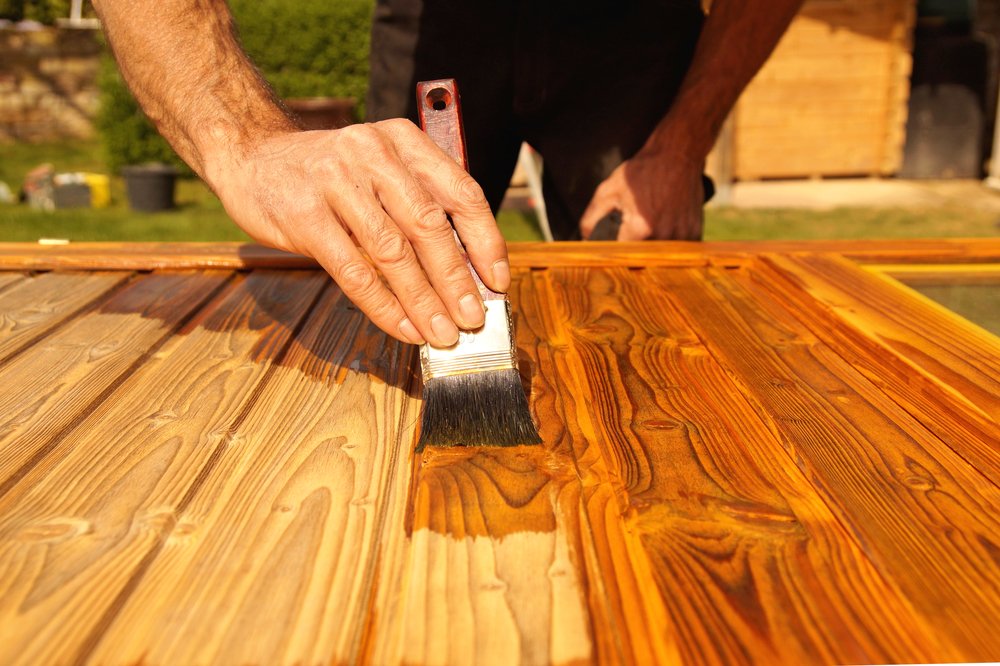
To maintain your stained garage door, look for small dings, dents, or scratches and lightly sand the area. Apply a touch-up stain, blending it in the surrounding area. Finish it off with a maintenance coat which provides a protective layer and adds sheen.
Choosing Paint
Paint is a universal finish choice because it can be used on most wood, vinyl, or composite doors. Garage doors are primed and painted using a high quality, exterior grade latex paint. While a garage door manufacturer will offer a selection of paint colors to choose from, most manufacturers will also match any custom color sample you request, as long as the color meets their standards for Light Reflective Value (see Considering Color Choices below).
For ongoing maintenance for painted doors, we recommend a yearly check for small dings or dents, which you can touch-up with paint. Afterwards, you can apply a coat of Turtle Wax to provide a protective coating on your door.
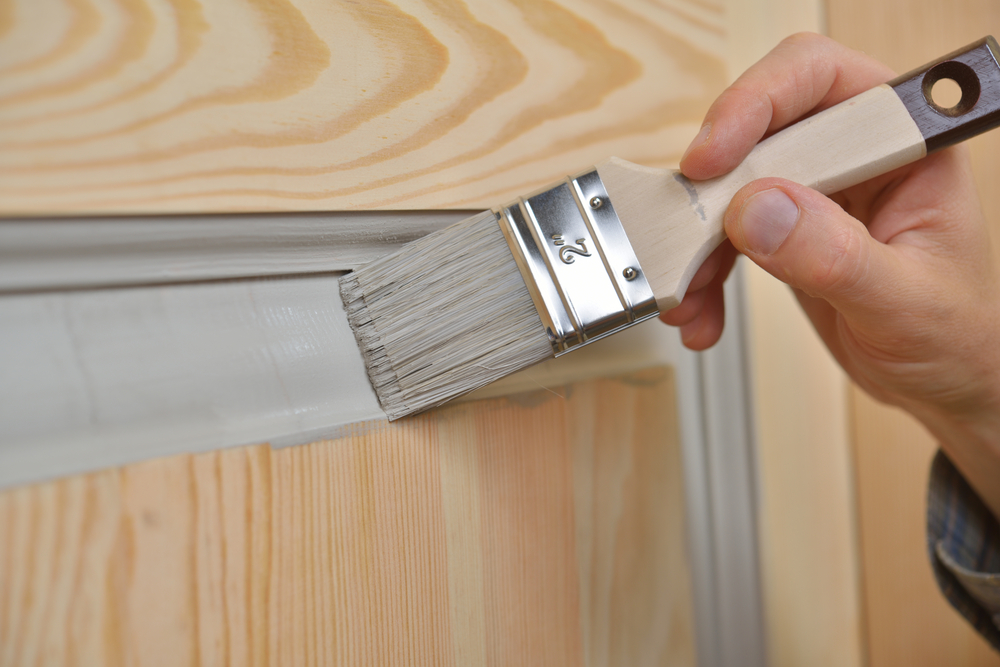
Choosing Faux Stain Paint
When you want the rich look of a stained wood paired with a low-maintenance composite door, choose a faux stain paint. Faux stains can create finishes that mimic mahogany, oak, walnut, cherry, and driftwood.
Your faux stain finish will be completed with the addition of a protective top coat. For ongoing maintenance, we recommend reapplying a coat of Helmsman Spar polyurethane (exterior grade) when your garage door finish begins to lose its sheen.
Considering Color Choices
Once you’ve decided on the type of finish to apply to your doors, the next step is choosing the best stain, paint or faux stain color. Your first instinct will be to choose a color that complements your home and that certainly is important. But, you also want to use caution when choosing a color that is too dark, as it can cause your doors to age prematurely.
Paint colors are measured with a value known as LRV (Light Reflectance Value). LRVs are specific to each color and are an indication of how much light the color reflects. Dark colors generally have an LRV that is 40 or less, which means they absorb more light and therefore heat up more quickly. Light colors usually have an LRV that is 60 and up. A higher LRV (larger number) reduces the heat build-up in the door, reduces fading, and reduces issues with normal wood performance.
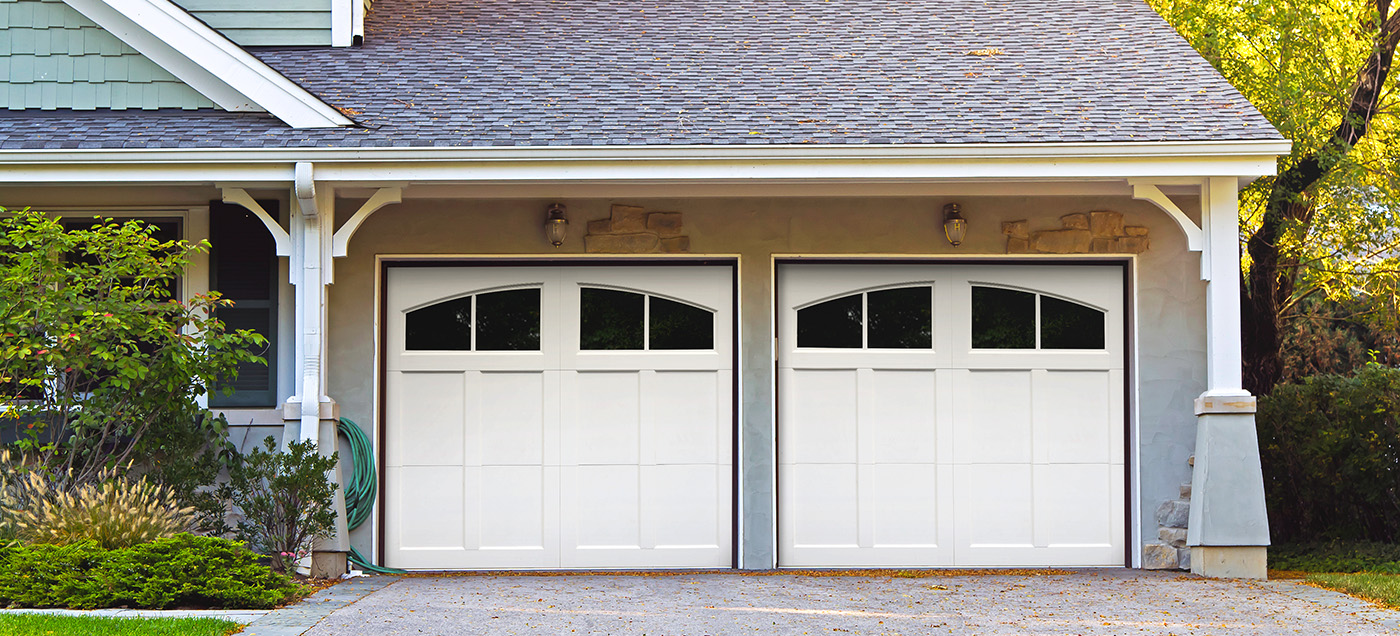
Stain colors do not have a measurement system in place to rate heat reflectance or absorption. But like paint, darker stain colors absorb more heat than lighter colors.
Always consider the direction of the sun exposure on your doors when selecting a paint or stain color.
